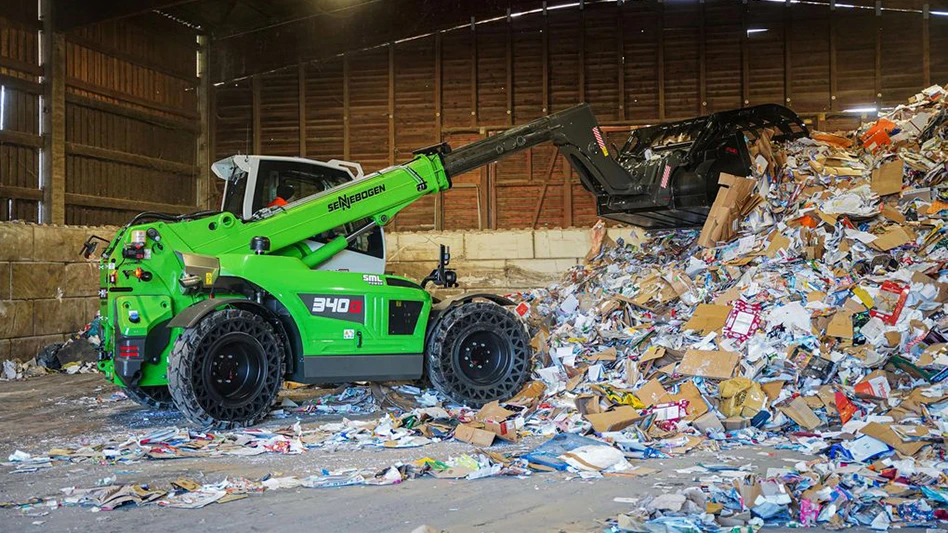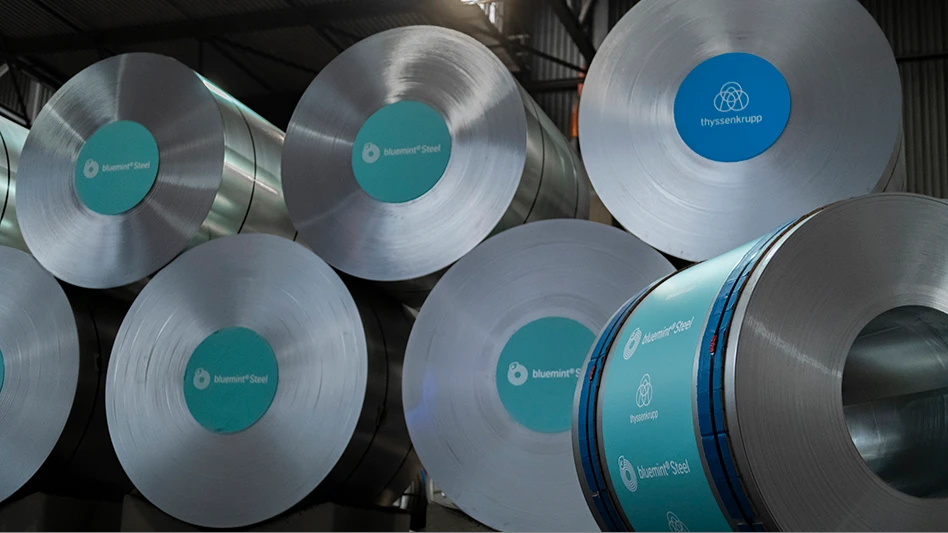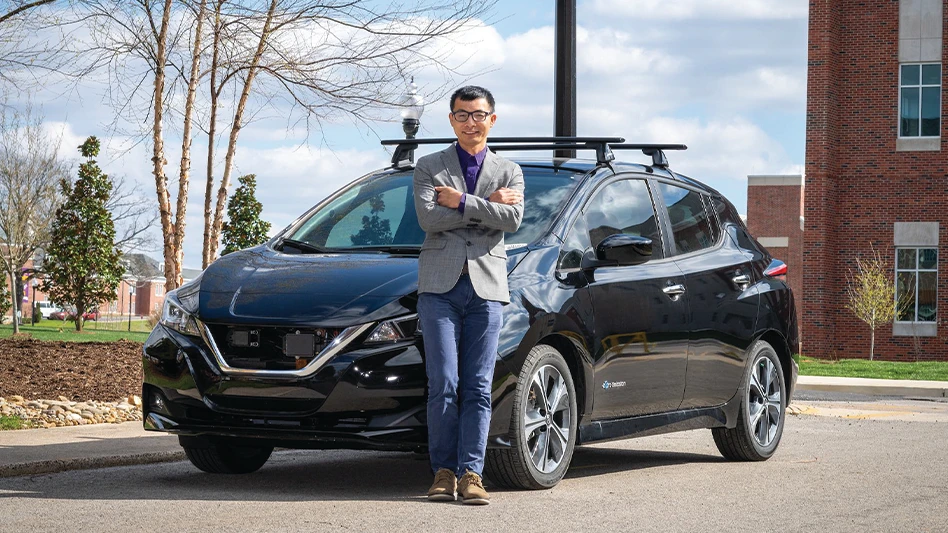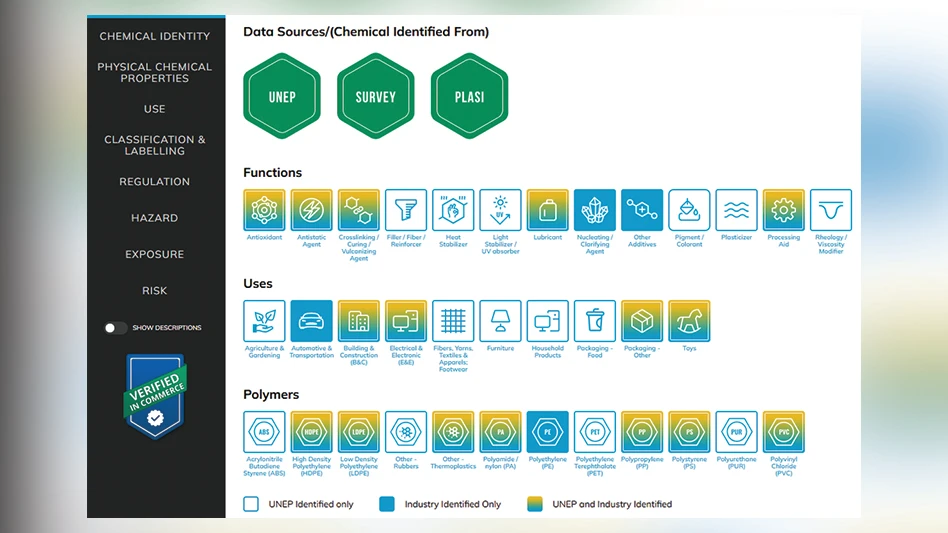 Editors' Note: The following article is an edited excerpt from the Diesel Technology Forum's "Clean Diesel Technology for Off-Road Engines and Equipment: Tier 4 and More." The full paper is available at http://www.dieselforum.org/files/dmfile/CleanDieselTechOffRoad.pdf.
Editors' Note: The following article is an edited excerpt from the Diesel Technology Forum's "Clean Diesel Technology for Off-Road Engines and Equipment: Tier 4 and More." The full paper is available at http://www.dieselforum.org/files/dmfile/CleanDieselTechOffRoad.pdf.
Clean diesel technology is now the standard for everything from new passenger cars and pickup trucks to highway commercial trucks. Clean diesel is a system of three key parts: cleaner diesel fuel, advanced engine technology and aftertreatment. Starting in 2011, this new generation of clean diesel technology for off-road engines and equipment, known as Tier 4, has been making its way onto industrial job sites around the country.
What is Tier 4?
Tier 4 refers to a generation of federal air emissions standards established by the U.S. Environmental Protection Agency (EPA) that applies to new diesel engines used in off-road equipment. Essentially, it requires manufacturers to reduce the levels of particulate matter and nitrogen oxides (NOx) to a level that is 50 to 96 percent lower than the existing generation of diesel engines. It is important to note that Tier-4 emissions requirements apply to new products only and do not apply retroactively to any existing machines or equipment.
|
THE FUTURE OF EMISSIONS REGULATION Whether you are an equipment dealer, owner or operator of diesel machines and equipment, there are a number of important trends to watch: More State and Local Requirements: More than any point in the past, the number of state and local laws regulating the use of diesel engines and equipment are growing. This constantly changing environment requires that equipment owners and dealers stay abreast of state and local laws and regulations which can regulate emissions, idling times and fuel use. Owners and Operators Have More Responsibility: The responsibility for reducing diesel emissions is moving toward owners and operators rather than manufacturers. Historically, reducing emissions from diesel engines and machines has been totally an issue between engine makers and EPA regulators, where new clean air standards were set and manufacturers made design changes to meet the standards. Owners and operators simply purchased the new model engines and equipment, and, over time, newer engines replace older ones and the overall emissions levels improve as the fleet gets newer. However, this trend is changing. Since Tier-4 emissions will be near zero, the amount of research and development has increased and is more complex compared with previous Tier transitions. Since diesel engines are known for their durability, many older machines will remain in use for years to come and will begin accounting for a larger share of diesel emissions. Some of the oldest engines and machines have 20 to 40 times the emissions levels of a new Tier-4 engine. As new ozone and PM standards are adopted in the next five years, state and regional officials will be looking for cost-effective, near-term ways to reduce emissions through requirements or aggressive incentives to accelerate the modernizing and upgrading of existing engines and machines (aka retrofitting) to lower emissions levels. New Emphasis on Reducing Equipment Idling: Depending on age and condition, an idling diesel engine can consume one-half to 1 gallon of fuel per hour. Many job sites have multiple machines operating at various intervals that are left idling when not in use. Unlike retrofit regulations, idle reduction measures virtually always have benefit environmental as well as engine benefits and so there will likely be more efforts to raise the awareness about diesel idling and the economics of shutting off engines when not in use; saving money for owners and reducing emissions in the air. Climate Change, Fuel Economy and CO2: Efforts are underway in the Congress and at EPA to regulate emissions of CO2, which are directly related to the fuel consumption of an engine/vehicle or machine. For cars, EPA is establishing both a CO2 emissions standard and higher fuel economy requirements by 2017. In the highway truck market, EPA and the Department of Transportation are currently working on establishing what will ultimately be standards for heavy-truck fuel economy and CO2 emissions in the next few years. While fuel economy and CO2 standards have not been proposed for off-road machines and equipment to date, this is always a possibility for consideration by policymakers. Hybridization: Could a hybrid drive loader or dozer be in your future? These options are already available on select machines by some manufacturers, but expect to see more hybridization as technology evolves and costs are reduced to allow the more widespread use of electric motors, batteries and storage systems on off-road machines and equipment. - Diesel Technology Forum |
Why are these changes being made?
Through the Clean Air Act, EPA establishes national clean air standards that determine levels of allowable emissions (ozone, fine particles, etc.) in the air. From that, sources of these emissions (cars, trucks, tractors and power plants and other industries) are regulated by EPA to control the volume and types of emissions. Each state or regional area with levels of emissions that exceed the standards must develop a plan to improve air quality and meet the clean air requirements established by EPA. Introducing new and cleaner diesel engines will aid in state and regional clean air compliance.
How were the "Tiers" established?
The "tiered" series of emissions regulations governing new off-road engines and equipment has been in effect during the last 13 years. These standards establish progressively lower allowable NOx emissions and particulate matter (PM). It is a complex system and its compliance dates are based on the size of engine (in horsepower and in kilowatt hours) and other factors. The Tier-4 standards provide manufacturers with a flexibility provision and include an interim step—Tier 4 interim—that requires substantial reduction in PM emissions and flexibility in lowering oxides of nitrogen. A Tier-4 final step includes additional reductions in NOx and HC (hydrocarbon) emissions.
A Tier 0 engine has basically no modern emissions controls and may be referred to as unregulated. It is likely to be mechanically controlled rather than electronic. As the standard level progresses—Tier 1, Tier 2, Tier 3—the corresponding engines are lower in emissions and more advanced technologically than the previous generation. The use of electronic engine controls, new higher pressure fuel-injection systems and advanced turbocharging are technologies that reduce emissions and aid performance.
Can I still order a Tier-3 Engine?
According to federal law and EPA regulations, depending on the machine, manufacturers will typically only be able to produce the Tier-4 engines after the established deadlines. However, equipment dealers can sell inventories of engines and equipment from the previous generation technology (Tier 3) until the inventory is depleted. Each engine and equipment OEM may have different technology and transition plans, so it will be important to understand these requirements for each machine and horsepower rating of each engine and each manufacturer. Under the EPA rules, manufacturers are provided with flexibility in meeting the requirements. Also, machines slated for export outside the U.S. are treated differently than their counterparts.
Do the new Tier-4 engines require different fuel?
Yes! New Tier-4 generation engines and equipment require the use of ultra-low-sulfur diesel fuel (ULSD), which has no more than 15 ppm (parts per million) sulfur. This fuel has been used since 2006 in on-highway vehicles. Older off-road machines and engines can continue to use the higher sulfur fuels, which will be available in diminishing quantities nationwide until December 2011. (More information on clean diesel fuel requirements is available at www.clean-diesel.org.)
How are Tier-4 engines different?
While each manufacturer will pursue its own technology path and emissions compliance strategy, a number of new technologies are coming on many Tier-4 engines and equipment. For the equipment, the changes likely to be most noticeable are in the packaging and placement of the aftertreatment system and the increased size of the air intake system to accommodate the needs for increased airflow and cooling. Engine compartments may be reworked to manage the new systems. Some OEMs (original equipment manufacturers) have indicated they will package any new exhaust system configuration inside reworked sheet metal skin, while others will place the systems in their traditional locations with additional shielding and mounting hardware to accommodate the heavier exhaust system components.
Most Tier-4 engines will be electronically controlled, meaning that a computer will monitor and adjust the fuel and air mixture to optimize emissions and performance for the engine in real time. In addition, changes in the engine will include new and different systems to accommodate the increased heat rejection of the new engines. For the first time, most off-road equipment likely will incorporate emissions control technology in the exhaust system, such as a catalytic converter and/or particulate filter, typically in place of the existing muffler and exhaust system. Some of these new exhaust aftertreatment systems mean that the pipes and placement of the muffler and exhaust may be different than previous generations of equipment or potentially larger in size to accommodate the new functions and, in some cases, hotter exhaust temperatures. There are two primary technology pathways for meeting the Tier-4 requirements: exhaust gas recirculation or selective catalytic reduction.
Some Tier-4 engines will include use of cooled exhaust gas recirculation (EGR). EGR is a technique that recirculates a portion of the exhaust gases back into the combustion chamber, which has the effect of lowering the combustion temperature and reducing formation of NOx. This system will add manifolds and plumbing around the engine.
One of the biggest changes for engine and equipment dealers is that some engines/machines will use a new emissions control technology system, known as selective catalytic reduction (SCR). This technology also is designed to reduce NOx emissions. Widely used in Europe on heavy-duty trucks and in some U.S. stationary industrial and power generation settings, SCR technology was new to the U.S. for mobile on-road and off-road applications in 2010. The majority of heavy-duty truck manufacturers began using SCR technology in their 2010 products, along with a number of light-duty diesel car manufacturers, and some manufacturers will use this in their off-road equipment offerings.
In this SCR system, a special catalyst is positioned in the exhaust stream/muffler system downstream from an active spray dosing system that periodically sprays a mist of a chemical reagent called diesel exhaust fluid (DEF), or aqueous urea, to react with the exhaust NOx and lower tailpipe emissions. Depending on its size, a machine will have a storage tank holding anywhere up to 15 gallons of liquid DEF. The DEF dosing system, supply and return tubing and control and monitoring functions are all integrated into the engine electronic controls. DEF consumption is dependent on equipment use, load factors, idle time, etc.
Manufacturers are optimizing SCR technology and DEF tank sizes so that DEF tanks need to be replenished in conjunction with key maintenance intervals. Indicator lights on the dash warn the operator when the DEF supply is running low and should be replenished. If it is not replenished, upon a series of startups, the machine will eventually revert to a "limp" mode, where engine performance is derated until the DEF fluid is replenished and the integrity of the emissions control system is restored.
DEF supply has been growing for the on-highway vehicle market. It is generally expected to be more widely available as more engines and vehicles that require it are produced.
Tier-4 engines and machines may have other differences depending on the manufacturer. These differences could include changes in horsepower ratings, smaller engine displacements, differing power and torque performance, higher fuel economy and other factors.
 Early this year, Caterpillar released its C1.5 and C2.2 engines, which comply with Tier 4 emissions requirements. Early this year, Caterpillar released its C1.5 and C2.2 engines, which comply with Tier 4 emissions requirements. |
Will there be a phase-out for engines?
The Tier-4 requirements apply only to new engines—including those sold in California and all other states. There is no federal requirement to upgrade any existing engine to the new Tier-4 standards. California is pursuing separate state law requirements for the modernizing and upgrading of off-road machines and equipment in that state. (More information can be found at www.arb.ca.gov/diesel.)
Is this the last step in reducing emissions?
Diesel engine emissions have been moving toward zero for several years. However, EPA establishes future standards based on air-quality considerations and technical feasibility.
New efforts are underway to establish fuel economy requirements for on-highway trucks, focusing on carbon dioxide (CO2) emissions as part of a broader climate change policy.
Consideration of CO2 emissions from off-road engines and equipment is possible in the future.
|
EMISSIONS PERFORMANCE AS A CUSTOMER CONSIDERATION In addition to the typical considerations of maintenance, productivity, resale and the total cost of ownership, there are new reasons why the users of diesel engines and equipment need to become more fluent with engine emissions requirements. Because of new national clean air standards and growing pressure for "greening" of government and private industry, it is projected that equipment owners will increasingly encounter contract specifications, job bids and project riders and contingencies that take into consideration the emissions profile of their equipment in the project bidding and award process. For example, on public projects such as transportation facilities or infrastructure, some local and state governments have in recent years begun to require contractors to provide detailed information on the numbers and types of equipment to be used on a project and the emissions profiles of the equipment, along with an indication of whether the equipment has been "retrofitted" with exhaust aftertreatment controls or other technology, along with other factors. Some contracts had previously required that as a condition of bidding on a contract, contractors would have retrofitted all their machines and equipment, used only cleaner diesel fuel on the prospective job site or other similar emissions-reducing conditions. One of the first and most visible national projects to have such a requirement was the "big dig" project—building a central artery and tunnel through Boston. More recent examples include the Cook County Illinois green construction specifications and the Illinois Executive Order. Emissions profiles of a contractor's equipment are becoming a new aspect of competitive bidding and can make the difference in winning or losing future jobs. Outside of California there are presently no state laws requiring the mandatory retrofitting of existing, privately owned diesel engines or equipment. However, there are a growing number of states, including Illinois, New Jersey, New York and Rhode Island, that require the retrofitting of state-owned equipment or that which is under contract to the state. |
This article is an edited excerpt from the Diesel Technology Forum's "Clean Diesel Technology for Off-Road Engines and Equipment: Tier 4 and More." The Diesel Technology Forum describes itself as a nonprofit educational organization dedicated to raising awareness about the economic importance and essential uses of diesel engines, highlighting the continuous improvements to reduce emissions from new and existing diesel engines and leading the way for future clean diesel technology in all applications. It represents engine and equipment makers, key component manufacturers, fuel producers and emissions control technology manufacturers.
MORE INFO:
In the future, owners and operators of off-highway equipment may find they are more directly affected by new emissions regulations for such equipment. For an update on trends that could affect owners or operators of diesel machines and equipment in the future, read the sidebar that accompanies this feature.

Explore the November 2011 Issue
Check out more from this issue and find your next story to read.
Latest from Recycling Today
- Harsco brands slag-content asphalt as SteelPhalt
- ArcelorMittal puts French EAF conversions on hold
- Associations ask for effective EPR to drive textile circularity in Europe
- GESA report claims 72 countries recycled EPS in 2023
- Report: Saica exploring recycled paper mill project in Dayton, Ohio
- Hydro’s Alumetal to meet 15 percent of its energy demands through solar
- CSA Group publishes standard defining plastics recycling in Canada
- Second Cyclyx Circularity Center to be located near Fort Worth, Texas





